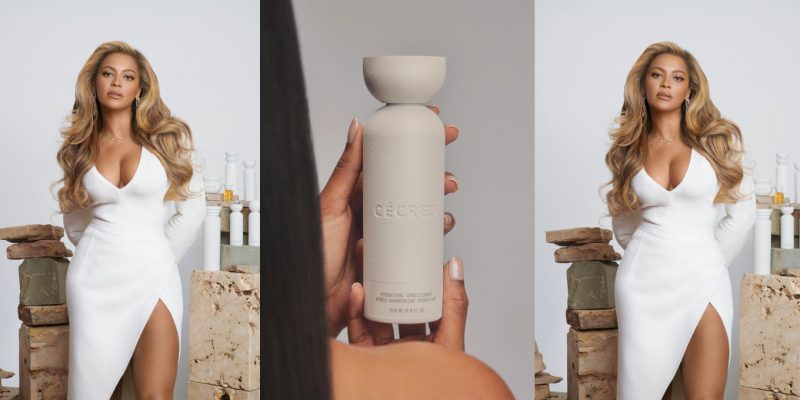Skincare
Are Exosomes the Next Frontier in Aesthetics?
Can the tiny particles live up to their big promise?
by : Caitlin Kenny- Apr 1st, 2024

Launchmetrics Spotlight
For millions around the world, it was Kim Kardashian who put the word “exosomes” on their radar just over a year ago. But for Dr. Damian Naqvi, who’s based in Laval, Que., it was a Korean woman walking by him in Paris in 2018. “I couldn’t believe the quality of her skin,” he says. “I was so shocked that I ran after her.”
Her secret? Exosomes, also known as “extracellular vesicles.” “An exosome is essentially an envelope inside a cell that contains messages,” says Naqvi, chief medical officer at Univers NuFace medical cosmetic clinic. Think of it as a little package of instructions—lipids, proteins, nucleic acids—that tell nearby cells to create new proteins.
In skincare, exosomes are derived from stem cells (immature cells that can develop into different types of cells) and thought to tell lagging skin cells to pump up collagen and elastin production, which contribute to skin plumpness and tightness, respectively.
“In Korea, the U.S. and some other countries, they’ve taken stem cells and isolated exosomes—skipping the middleman, which is the stem cell,” says Naqvi. Because they’re not actual full stem cells, exosomes don’t have what Naqvi calls “the cellular machinery to replicate themselves.” No nucleus means no cancer risk or immune response, which are potential downsides associated with stem-cell therapy, he explains.
Exosomes have been billed as stem cells but better, so it’s no wonder they’ve become the latest buzzword in beauty circles. “I go to a lot of trade shows, and over the past eight to 10 months, exosomes have been the talk of the medical-aesthetics industry,” says Karmen LaMer, founder of Tight Clinic medical-aesthetics clinic in Toronto. Keen to add the innovation to her offering, she set out to research different manufacturers and landed on a formula that contains “adipose-tissue-derived” exosomes and is made by California-based Benev and distributed in Canada by Xcite Tech. Translation: They were taken from the removed fat of four screened donors after liposuction, genetically tested, colonized and then freeze-dried for stability.
Other formulas contain exosomes harvested from umbilical cords, blood and even roses—but these versions all give Naqvi pause because so far there isn’t enough data to back them. “All sorts of companies are making all sorts of claims,” he says. “Even [for me] as a physician, it’s hard to sort out what’s real and what has science and what doesn’t.” But sort it out is exactly what he’s on a mission to do. We happened to connect with him the day before he presented on exosomes at the Canadian Association of Aesthetic Medicine’s 20th Annual Conference.
While doctors continue to learn more, glow-seekers are levelling up in-office treatments with exosome add-ons. They’re typically offered in conjunction with microneedling, laser treatment (as was the case in Kim Kardashian’s Instagram post) or chemical peels—all services that create tiny wounds in the epidermis, which allow the exosomes to pass through. They can be smoothed over the skin after a treatment, much like a serum, or sprayed on with a JetPeel device, which uses a pressurized stream to deliver the ingredients deep into the skin. (This means that at-home products boasting exosomes on their labels are a no-go. “If you’re using a skin cream with exosomes in it, you’re wasting your money,” says Naqvi. “An exosome is way too big to go through the skin’s barrier.”)
With their purported ability to jump-start your skin cells, exosomes promise to improve the results of anti-aging treatments while also reducing healing time. When applied to the scalp, they’re said to support hair growth. These uses and benefits have earned exosomes comparisons to PRP facials (a.k.a. “the vampire facial,” where your blood is drawn, spun to isolate the cell-repairing plasma and then applied over microneedled skin), except they don’t require a blood draw and are a more predictable product (since the quality of your plasma depends heavily on your own health, age and lifestyle).
At Tight Clinic, one of the first spots to offer exosome therapy in Canada, LaMer estimates that about half of her clients are paying the extra $350 to add exosomes to their treatments, and so far, all the feedback has been positive. “One hundred percent of people are happy—everyone is shocked,” says LaMer, who herself swears by exosomes for the way they shorten the duration of her post-microneedling “Freddy Krueger-esque” face from roughly four days to 36 hours or less.
Naqvi has experimented with exosomes on his own skin too, including when he had a gash on his forehead. “For the heck of it, I put exosomes on it every day,” he says. “I took a picture every day, and it was completely healed in five days. To me, that was really fast. It should’ve taken a lot longer, and there should’ve been a scar.”
But not all of his trials have gone as smoothly. “The first time I had exosomes was in Korea; I had them injected into my face, and my dark beard turned red for eight months,” recalls Naqvi. It should be noted that Health Canada has not approved the injection of exosomes (and that the brand that turned Naqvi’s beard red isn’t available here). “At the time, I thought, ‘Wow, it’s changing the proteins expressed by my [genetic] code, but imagine what else it’s doing that we don’t know.’”
No one was ever able to explain why that happened, which is part of the concern Naqvi has about the current state of exosome research. “My big caveat is that though there can be some messages that are beneficial, I don’t think we know all the messages,” he says. There’s even disagreement in the scientific community about what part of the exosomes’ “messages” deserve credit for their effects—be it the growth factors, mRNA (messenger ribonucleic acid) or some combination.
There’s a lack of independent studies, with most research coming from the companies that are making exosome prod- ucts. In Naqvi’s practice, where he uses Benev’s fat-derived exosomes, he has noticed anti-inflammatory effects, with results like shortened post-procedure healing and improvements to eczema. He’d like to see these benefits confirmed with a large double-blind study, but in the meantime, he’s comfortable offering topical exosomes to his patients, having researched their safety carefully. “With the ones I’m using from fat cells, I think the worst that can happen is that nothing happens,” he says.
But he remains captivated by the possibilities that go far beyond “nothing.” Naqvi has seen companies overseas working on transdermal patches that they claim will heal diabetic ulcers and skin blisters caused by autoimmune diseases. “If we could really do that, imagine how much it would reduce morbidity,” he says.
Hopes are high in the cosmetics world too. “One day, when we’re able to inject this, it’ll probably put filler out of business,” says LaMer. But injections—whether for medical or cosmetic use—are unlikely to get approved in Canada anytime soon, says Naqvi. “There are too many unknown factors and too many people taking advantage of the idea that some people are hoping for miracles,” he says. His advice to the exosome-curious, including the doctors he speaks to at conferences: “Yes, there’s something here, but it’s not some sort of magic bullet at the moment—there’s still a lot of work to do before we can harness this technology to its full potential.”
Newsletter
Join our mailing list for the latest and biggest in fashion trends, beauty, culture and celebrity.
Read Next

Decor
10 Amazon Decor Finds That Belong in a Designer’s Home
Yes, Amazon.
by : Maca Atencio- Apr 29th, 2024

Fashion
Pregnant Bellies Are Moving Into the Spotlight
Viva la MILF!
by : Jillian Vieira- Apr 29th, 2024

Beauty
Summer Prep: How to Feel Confident in Your Swimsuit
New Size-Inclusive Swimwear: Gillette Venus partners with The Saltwater Collective to Launch a Collection for Any Body
by : ELLE Canada- Apr 24th, 2024




